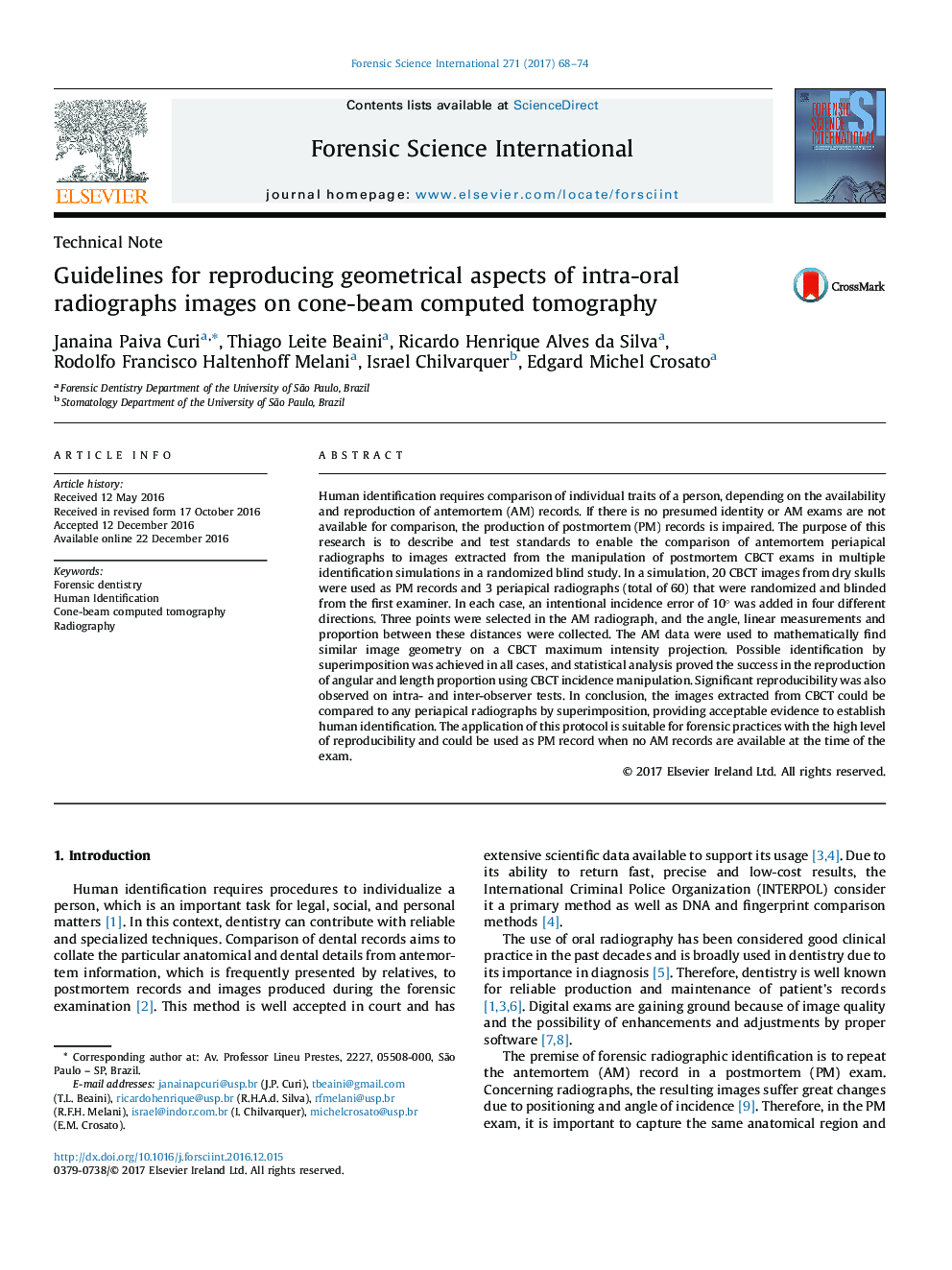| Article ID | Journal | Published Year | Pages | File Type |
|---|---|---|---|---|
| 6462072 | Forensic Science International | 2017 | 7 Pages |
â¢Study aim on human identification through forensic radiology.â¢Method to reproduce any periapical by changing the point of view on CBCT.â¢Validation test with 60 radiographs and analysis of 20 dry skull.â¢Quantitative guidelines to achieve similar incidence angle.
Human identification requires comparison of individual traits of a person, depending on the availability and reproduction of antemortem (AM) records. If there is no presumed identity or AM exams are not available for comparison, the production of postmortem (PM) records is impaired. The purpose of this research is to describe and test standards to enable the comparison of antemortem periapical radiographs to images extracted from the manipulation of postmortem CBCT exams in multiple identification simulations in a randomized blind study. In a simulation, 20 CBCT images from dry skulls were used as PM records and 3 periapical radiographs (total of 60) that were randomized and blinded from the first examiner. In each case, an intentional incidence error of 10° was added in four different directions. Three points were selected in the AM radiograph, and the angle, linear measurements and proportion between these distances were collected. The AM data were used to mathematically find similar image geometry on a CBCT maximum intensity projection. Possible identification by superimposition was achieved in all cases, and statistical analysis proved the success in the reproduction of angular and length proportion using CBCT incidence manipulation. Significant reproducibility was also observed on intra- and inter-observer tests. In conclusion, the images extracted from CBCT could be compared to any periapical radiographs by superimposition, providing acceptable evidence to establish human identification. The application of this protocol is suitable for forensic practices with the high level of reproducibility and could be used as PM record when no AM records are available at the time of the exam.
